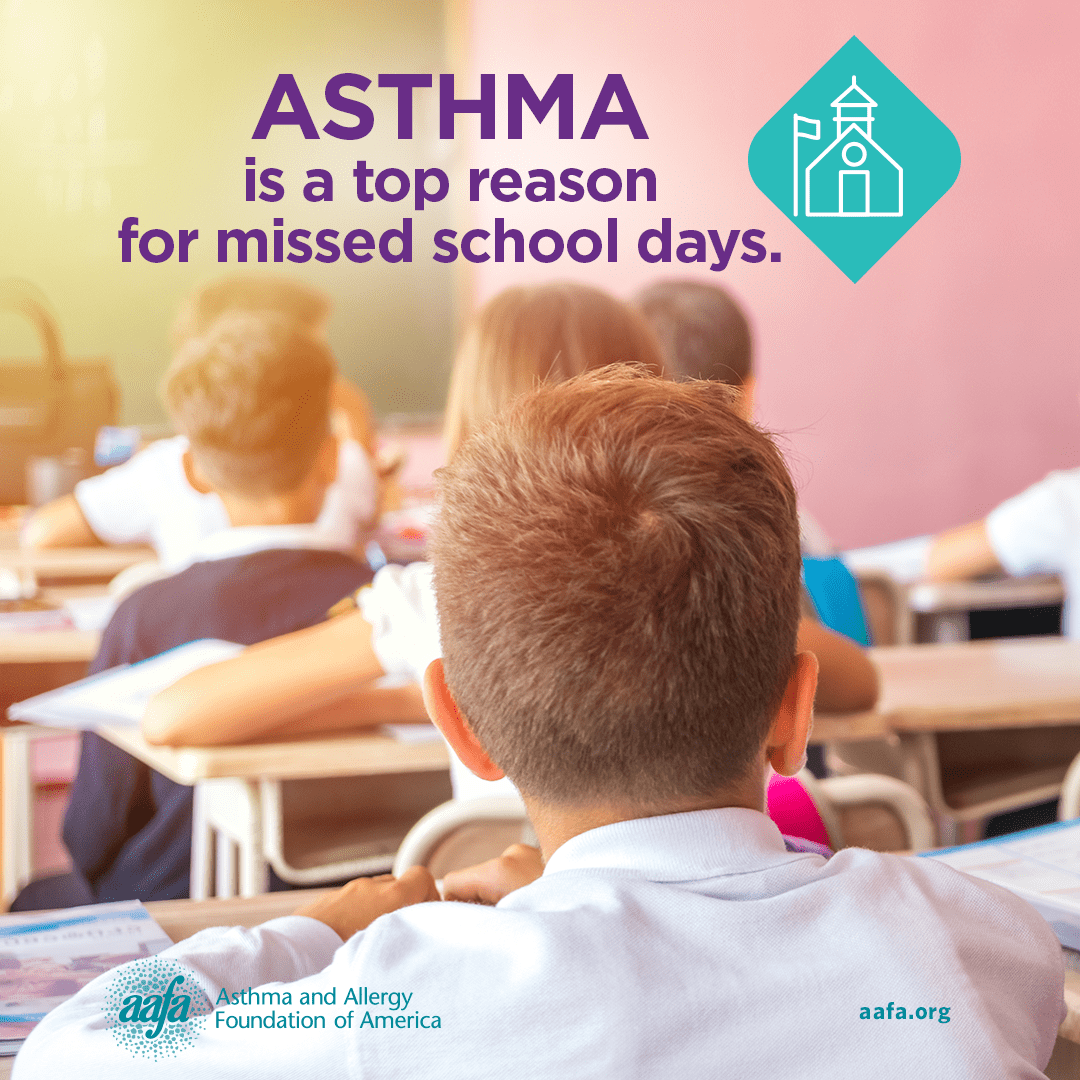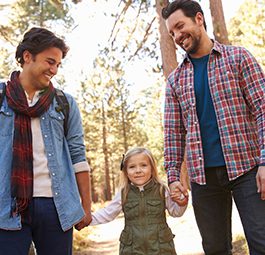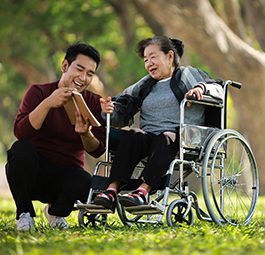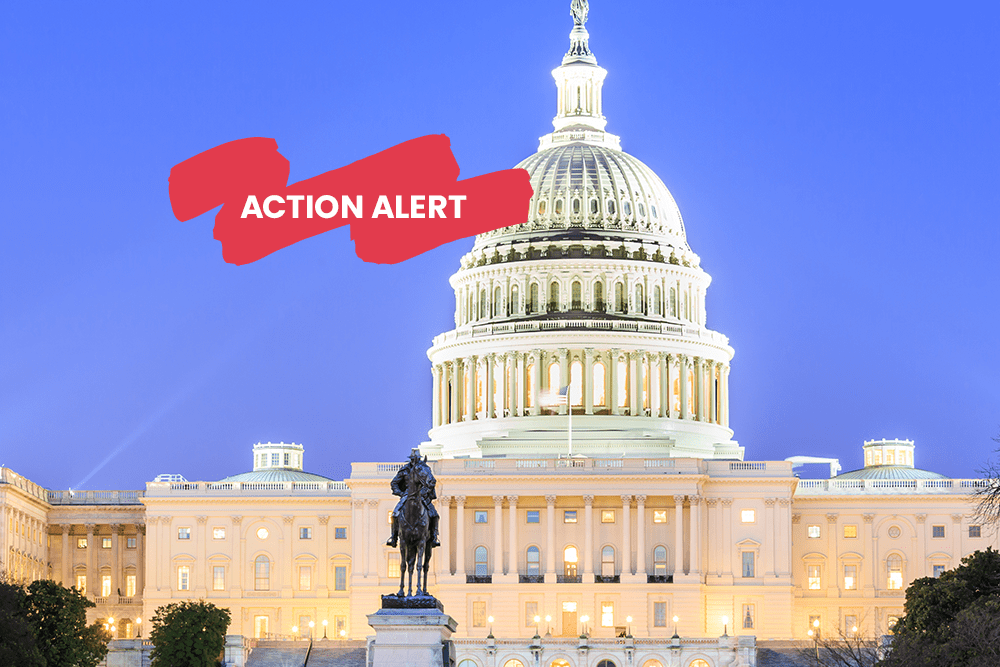Advocacy
Healthy Settings
In the U.S., about 90% of a person’s time is spent indoors, whether at school, home, or in the workplace.1 Environmental triggers, such as dust, pests, and mold, can cause asthma and allergy attacks that could possibly be life threatening. Minimizing the exposure to environmental triggers and creating a healthy environment is important for people living with asthma and allergies.
The Asthma and Allergy Foundation of America (AAFA) supports state and federal policies that promote healthy settings for people with asthma or allergies in various settings, including schools, day care centers, work, housing, homes, while traveling on airlines, and in restaurants and other food service locations.
Closed
Healthy Schools and Child Care Centers
As detailed in our “State Honor Roll” reports, AAFA strongly supports a range of state-level policy standards related to protecting children with asthma and food allergies in schools for grades K-12:
- Medication and treatment policies, including stocking of epinephrine auto-injectors (EAIs) and asthma drugs; liability protections for school workers; and requirements that schools collect updated health records and maintain incident reports for reactions and attacks;
- Awareness, including states recognizing the problems of food allergy and asthma in schools; and
- School environment, including school indoor air quality standards, outdoor air quality standards, and tobacco policies.
A full list of the policy standards AAFA endorses, as well as “extra credit” policies that further support allergy and asthma health in schools, can be found in AAFA’s most recent State Honor Roll Report.
The federal School Based Allergies and Asthma Management Program Act, enacted in 2021, creates a preference in federal children’s asthma program grants for states that have comprehensive school allergy and asthma management programs; full-time epinephrine auto-injector (EAI) trained personnel on site; asthma and allergy education for school staff; measures to reduce environmental triggers; and systems to coordinate with the families of children with asthma or allergies. AAFA will continue to work with states toward these policy goals, with the new preference as further inducement.
Several organizations provide tools and resources that can be used by school officials, school staff, teachers, health care professionals, parents and students to promote a healthy school environment.
- CDC Tool Kit for Managing Food Allergies in Schools
This CDC tool kit contains tip sheets, training presentations and podcasts to help school staff implement guidelines for managing food allergies in order to prevent and manage severe food allergic reactions in schools. - EPA IAQ Tools for Schools
The Indoor Air Quality in Schools Mobile App provides the user with access to the EPA’s IAQ for Schools Action Kit, which provides strategies to develop or sustain an IAQ management program. - EPA Managing Asthma in the School Environment
This document provides tools to establish and evaluate an indoor air quality management program, develop an asthma management plan, and reduce environmental triggers.
AAFA also supports laws that would extend these same policies to childcare settings. One of these bills is known as “Elijah’s Law.” Elijah’s Law is a bill that ensures child care facilities take concrete steps to manage food allergies for the children in their care. Such steps include developing emergency protocols, strategies for discussing food allergies with children, and plans for preventing exposure to food allergy triggers. In 2022, AAFA partnered with the Elijah-Alavi Foundation (EAF) to publish Child Care Policies for Food Allergy: Elijah’s Law Report for U.S. States and Territories. The report includes two parts: a review of state-level policies protecting children with food allergies in child care programs, and a toolkit for advocates to support Elijah’s Law in new states.
Healthy Housing
Common indoor allergens found in the home are dust mites, cockroaches, animals (pets), mold, and secondhand and thirdhand smoke. These allergens may be airborne, as well as present in carpet or on furniture.
Families living in substandard, low-income housing are more likely to be exposed to harmful asthma triggers and are at a greater risk of having severe asthma. These families often lack the resources to address health issues in the home. It is important that people with asthma know how to avoid asthma triggers. AAFA supports reimbursement for preventative services and home assessments that provide asthma education for people with severe asthma.
Here are some resources to help people living with asthma make their home healthier:
- 10 Steps to Making Your Home Asthma Friendly
The Environmental Protection Agency (EPA) provides 10 steps to help get rid of allergens in the home and have a more asthma-friendly home.
- Guide to Sustaining Effective Asthma Home Intervention Programs
This guide from the U.S. Department of Housing and Urban Development (HUD) describes how effective in-home asthma interventions are coordinated, supported, and funded.
- Help Your Child Gain Control Over Asthma
This booklet from the EPA helps parents learn more about how to prevent their child’s asthma attacks. It describes how to create a plan to take control of asthma and ways to find and keep things that could trigger an asthma attack away from a child.
- HOME Allergy Management
This online tool by the American College of Allergy, Asthma, and Immunology (ACAAI) educates people with allergies on managing indoor allergens. With HOME, a person can learn about the different types of indoor air allergens and receive tips on managing allergies.
- Implementing an Asthma Home Visit Program
This guide is provided by the EPA to be used by health plans that have established asthma management programs. This guide offers a step-by-step instructions on how to implement an asthma home visit program with an emphasis on environmental risk factor management.
- National Healthy Housing Standard
The National Center for Healthy Housing (NCHH) and the American Public Health Association (APHA) released the National Healthy Housing Standard. The standard is a health-focused property maintenance guide to improving housing conditions.
- Smoke-Free Public and Multifamily Housing
This webpage describes the HUD’s action plan to create smoke-free public and multifamily housing.
There are many national and local resources available that provide information on healthy home environments.
- Health Department Directories
The Centers for Disease Control and Prevention (CDC) provides a directory of health officials and health departments by state; local health departments by cities and counties; and federally recognized tribes and Indian organizations that focus on public health.
- Low Income Home Energy Assistance Program (LIHEAP)
LIHEAP helps keep families safe and healthy through initiatives that assist families with energy costs. LIHEAP provides federally funded assistance to reduce the costs associated with home energy bills, energy crises, weatherization, and minor energy-related home repairs. This webpage provides a map by state/territory of LIHEAP administrator contact information and website.
- Low Income Household Water Assistance Program (LIHWAP)
LIHWAP helps low-income households pay their water and wastewater bills to prevent shutoffs or restore services. This webpage provides a map by state/territory of contact information for LIHWAP administrators.
- National Center for Healthy Housing (NHCC)
The NHCC is a national nonprofit dedicated to establishing healthy and safe homes for people across all income levels through research, advocacy, training, and capacity building. Additional resources from NHCC include:
- Financing and Funding Resources
This webpage provides a detailed overview of financing strategies and resources for healthy homes programs through health care sources such as nonprofit hospitals and public or private insurance.
- Financing and Funding Resources
- Resident and Homeowner Resources
This webpage provides resources on the hazards in your home and what you can do to alleviate or eliminate their impacts.
- Resident and Homeowner Resources
- Rental Housing Codes
This webpage outlines these healthy housing codes that set the minimum standards for rental property and assigns specific duties for landlords and tenants.
- Rental Housing Codes
- State and Local Housing Codes
This webpage outlines codes that set the minimum standards that must be met by all housing – whether new or existing – to protect the health of the residents.
- State and Local Housing Codes
- U.S. Department of Housing and Urban Development
HUD is the federal agency responsible for national policy and programs that address U.S. housing needs, that improve and develop U.S. communities, and enforce fair housing laws. HUD aims to help create a decent home and suitable living environmental for people living in the United States. Local resources from HUD include:
- Office of Lead Hazard Control and Healthy Homes (OLHCHH)
The OLHCHH enforces HUD’s lead-based paint regulations, provides public outreach and technical assistance, and conducts technical studies to help protect children and their families from health and safety hazards in the home.
- Office of Lead Hazard Control and Healthy Homes (OLHCHH)
- State Information and Resources
This webpage provides a directory by state of local HUD resources, news, rental and home-buying assistance, and more.
- State Information and Resources
- Tenant Rights
This webpage provides a directory by state of resources surrounding local tenant rights, laws, and protections.
- Tenant Rights
- Weatherization Assistance Program
The Weatherization Assistance Program reduces energy costs for low-income households by increasing the energy efficiency of their homes, while ensuring health and safety. This webpage provides information on applying for program services, including a map by state/territory of state weatherization agency information.
- Your Local 211
Supported by United Way, 211 is a comprehensive source of information about local resources and services. Call 211 or use their online search tool by location for resources and contact information.
Housing discrimination is another factor people with asthma should know about. It is illegal under the Fair Housing Act. According to the U.S. Department of Housing and Urban Development (HUD), the Fair Housing Act “protects people from discrimination when they are renting or buying a home, getting a mortgage, seeking housing assistance, or engaging in other housing-related activities.”
- Office of Fair Housing and Equal Opportunity (FHEO)
The Office of Fair Housing and Equal Opportunity (FHEO) enforces, manages, and develops federal fair housing policies and laws.
- Fair Housing Act Overview
This webpage outlines the Fair Housing Act, who it protects, what type of housing is covered under the act, and what is illegal under the act.
- Fair Housing Rights and Obligations
This resource includes links to information on the rights various groups of people have under the Fair Housing Act.
- A Guide to Requesting Reasonable Accommodations and Modifications Under the Fair Housing Act (also in Spanish)
This guide can help you make a request for an accommodation or modification to your housing due to a disability.
- Report a Housing Violation
If you feel your rights regarding housing have been violated, you can report it. This site tells you how and when to report housing discrimination.
Healthy Workplaces
Occupational asthma is caused when substances found in the workplace cause the airways of the lungs to construct leading to wheezing, shortness of breath, chest tightness and coughing. You may develop asthma symptoms from your workplace or you may already suffer from asthma and notice that your condition has worsened at work. People who already suffer from allergies are more likely to develop occupational asthma. Jobs that require individuals to be exposed to certain chemicals, such as spray painting, insulation installation, manufacturing plastic or rubber can cause asthma. Common triggers for occupational asthma are chemicals, dust, mold, animals and/or plants. It is important to understand whether or not you are suffering from work-related asthma because constant exposure may result to long-term lung damage, loss of productivity and disability. AAFA supports policies which promote a healthy workplace for all employees.
- OSHA Do You Have Work-Related Asthma?
This Occupational Safety and Health Administration (OSHA) fact sheet provides a guide for a person and their doctor to determine if they are suffering from work-related asthma.
Healthy Airplanes
Airplanes can be a challenging setting for many people with allergies or asthma. Food reactions and asthma attacks occur in flights around the world, and individuals and families do not always request, or receive, accommodations to reduce the risk.4,5
AAFA supports policies that reduce the risk of in-flight medical emergencies, including:
- Service animals: AAFA supports policies that appropriately balance the right of all airplane travelers with disabilities. While some passengers do have a legitimate need for support animals while traveling, attempts to bring a broad range of animals on flights have increased, posing risks to people with asthma and/or severe allergies to animals. AAFA strongly endorses the 2020 federal regulation allowing airlines to permit only certified service animals on flights.6 AAFA supports airline policies that permit the legitimate use of service animals while limiting abuses, to minimize the risk of in-flight reactions or asthma attacks.
- Epinephrine auto-injectors: In addition, AAFA supports policies to promote access to EAIs on all flights to permit rapid response to in-flight emergencies.
- Pre-boarding accommodations: AAFA supports regulations that require airlines to allow passengers with food allergy or asthma to pre-board. Pre-boarding allows passengers time to wipe off the surfaces of their seating area (seat, armrests, tray) and appropriately stow their medicines within reach.
Healthy Restaurants
Restaurants are a common location for adverse reactions to foods, and represent a significant proportion of food allergy fatalities.7,8 This basic life activity can cause significant stress for families managing food allergies.9 Many restaurants and restaurant workers are not aware of, or are not implementing, practices to improve food allergy safety.10 Making restaurants safer could reduce preventable reactions, including death, and allow people with food allergies to engage more fully in social activities with their family and friends with less fear and stress.
Regulation of restaurants is generally a function of state law. A growing number of states – including, as of 2022, California, Maryland, Massachusetts, Illinois, Michigan, Virginia, and Rhode Island – have passed laws increasing food allergy awareness and safety in restaurants, as have New York City and St. Paul, Minnesota. These laws all contain one or more of the following requirements:
- Placement of posters with information on food allergy in food service establishments where employees can see them;
- Requiring food allergy training for food safety managers or other personnel;
- Requiring the state department of health to develop food allergy resources and training for restaurants; or
- Designation of restaurants as “food allergy friendly,” with a publicly searchable database.
AAFA supports passage of food allergy laws that regulate restaurants in all states, ideally incorporating all of the provisions above and encouraging improved food allergy labeling on menus.
References
- Environmental Protection Agency. Questions about your Community: Indoor Air. http://www.epa.gov/region1/communities/indoorair.html
- Centers for Disease Control and Prevention. Healthy Schools: Asthma Guidelines and Strategies. https://www.cdc.gov/healthyschools/asthma/strategies.htm
- National Health Interview Survey, 2014 (CDC).
- Sanchez-Borges et al, “In-flight allergic emergencies” World Allergy Organ J. 2017; 10(1): 15.
- Greenhawt, “International Study of Risk-Mitigating Factors and In-Flight Allergic Reactions to Peanut and Tree Nut.” The Journal of Allergy and Clinical Immunology in Practice Vol. 1, Issue 2 (March 2013) 186-194.
- Department of Transportation, Final Rule: Traveling by Air with Service Animals (2020). Available at https://www.transportation.gov/sites/dot.gov/files/2020-12/Service%20Animal%20Final%20Rule.pdf
- Wanich, N., C. Weiss, T. J. Furlong, and S. H. Sicherer. 2008. Food allergic customer (FAC) experience in restaurants and food establishments. J. Allergy Clin. Immunol. 121:S182.
- Weiss, C., and A. Munoz-Furlong. 2008. Fatal food allergy reactions in restaurants and food-service establishments: strategies for prevention. Food Prot. Trends 28:657–661.
- Begen et al., “Parents’ and caregivers’ experiences and behaviours when eating out with children with a food hypersensitivity.” BMC Public Health. 2018; 18: 38.
- Young et al., “A systematic review and meta-regression of the knowledge, practices, and training of restaurant and food service personnel toward food allergies and Celiac disease” PLoS One. 2018; 13(9)












